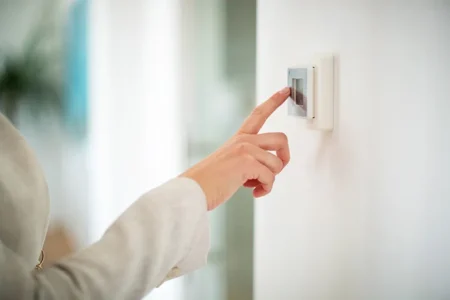When it comes to cutting ceramic tiles, precision and quality are key. Whether you’re installing a backsplash, creating space for plumbing or electrical fixtures, or cutting tiles for a custom design, using the right tool is essential for a clean and smooth cut. Ceramic hole saws are specifically designed to handle tough materials like ceramic and porcelain, but with so many options available, it can be difficult to know which one to choose. In this article, we will explore the different types of ceramic hole saws and help you determine which tool works best for cutting ceramic tiles.
Types of Ceramic Hole Saws
Ceramic hole saws are designed with specific features to effectively cut through hard, brittle materials like ceramic, porcelain, and stone. Here are the most common types of ceramic hole saws you will encounter:
1. Diamond-Coated Hole Saws
Diamond-coated hole saws are often the go-to choice for cutting ceramic tiles. The diamond coating allows the saw to cut through the hard surface without wearing down quickly. Diamond hole saws are known for their durability and precision, making them ideal for both professional and DIY projects.
These saws are available in various sizes and are perfect for creating clean, smooth holes in ceramic tiles without chipping or cracking the material. They are particularly effective for cutting through porcelain tiles, which are harder than traditional ceramic tiles.
2. Carbide-Tipped Hole Saws
Carbide-tipped hole saws are another option for cutting ceramic tiles. While they are not as effective as diamond-coated saws, carbide-tipped tools can still handle softer ceramic materials and perform well on thinner tiles. The carbide tips provide strength and wear resistance, allowing the hole saw to last longer than standard steel saws.
However, carbide-tipped hole saws may not be suitable for cutting through thicker or tougher tiles, and they tend to wear out faster than diamond-coated tools.
3. Bi-Metal Hole Saws
Bi-metal hole saws consist of a combination of high-speed steel (HSS) and a softer steel body. While these hole saws are more commonly used for cutting through wood, metal, and plastic, they can work on softer ceramic tiles. However, they may struggle with more durable materials like porcelain and could cause more damage to the tile surface.
These hole saws are less expensive than diamond or carbide-tipped options, but they may not offer the same level of precision or longevity when working with ceramic tiles.
4. Core Drills with a Wet Cutting System
Core drills with wet cutting systems are ideal for professional use, especially for larger tiles or high-volume projects. These hole saws are designed to operate with water to reduce friction and heat buildup during cutting. Wet cutting helps to minimize the risk of tile cracking and improves the longevity of the tool.
The wet system ensures that the cutting edge remains cool, which is particularly important when cutting through tough materials like porcelain or stone tiles. This method is typically used with larger hole saws and for projects where a high level of precision is required.
Key Features to Look for in a Ceramic Hole Saw
When selecting a ceramic hole saw for your project, there are a few key features to consider:
1. Size of the Hole Saw
Ceramic hole saws come in a range of sizes, typically ranging from 1 inch to 6 inches or more. The size you choose will depend on the diameter of the hole you need to create. For smaller fixtures like taps or shower heads, a smaller hole saw is sufficient, while larger holes for pipes or ducts may require a larger hole saw.
2. Cutting Depth
Make sure the hole saw you select has the appropriate cutting depth for your project. If you’re working with thicker tiles, you may need a hole saw with a deeper cutting depth to ensure you can cut all the way through the material. Some hole saws are designed specifically for deeper cuts and can handle thicker materials more effectively.
3. Durability and Quality
Ceramic tiles are hard materials, so you’ll want a hole saw that is both durable and high-quality. Diamond-coated hole saws tend to last the longest and provide the cleanest cuts. If you’re working with softer ceramic tiles, a carbide-tipped saw may be more cost-effective, but it won’t last as long or perform as well on tougher materials.
4. Cooling and Lubrication Features
For tougher tiles, a hole saw with built-in cooling or lubrication features, such as a wet cutting system, can help reduce heat buildup and improve cutting efficiency. Using a wet system will also help prevent tile cracking and extend the life of the hole saw.
For more detailed guidance on choosing the best ceramic hole saw for your needs, you can refer to this informative resource on otwornica do gresu.
Conclusion
Choosing the right ceramic hole saw is essential for achieving a clean, professional-looking cut without damaging your tiles. Whether you’re a DIY enthusiast or a professional, selecting a diamond-coated hole saw for tougher materials like porcelain or a carbide-tipped saw for softer ceramic tiles will ensure your project goes smoothly. Always consider the size, cutting depth, and durability of the hole saw to get the best results. With the right tools, you’ll be able to create precise, clean holes in ceramic tiles with ease.







